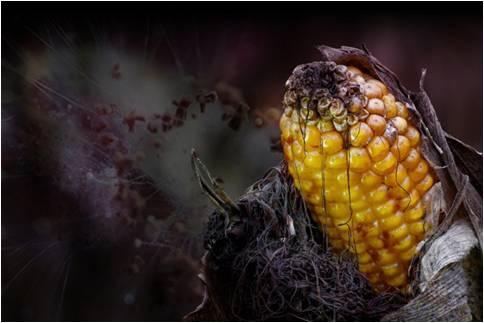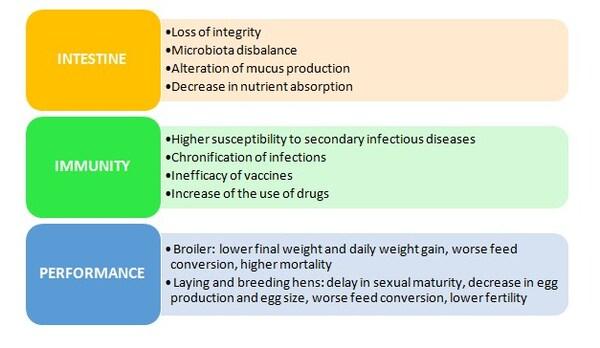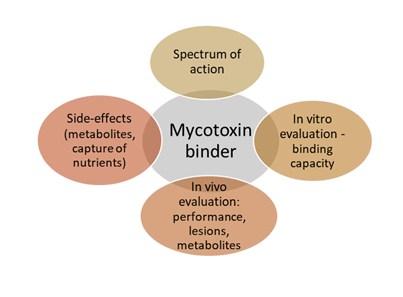Effects of mycotoxins on chicken production in Southeast Asia
Published: August 31, 2021
By: Maria Soriano
Mycotoxins are metabolites produced by fungi that can be present in feed ingredients. They are of great concern because they reduce the nutritional value of the feed formula and have a negative impact on the health and performance of the livestock.
In the case of Southeast Asia, the annual loss due to aflatoxins in Philippines, Indonesia and Thailand was estimated to be around $900 million dollars, of which $500 million of the costs were linked to the effects in human health.
Mycotoxins with the highest prevalence during the first semester of 2021 in Southeast Asia, as it occurred during 2020, were fumonisin and aflatoxin.
Prevention and control programs have been established to reduce the risk of mycotoxin production. Despite of this, their presence in feed is often unavoidable. Because of this, the use of mycotoxin binders in animal feeding to minimize the effect in animal and human health is widespread.
WHAT ARE MYCOTOXINS AND WHERE ARE THEY?
Mycotoxins are produced by fungi as a defense tool, in order that fungi can compete against other microorganisms for their survival in the environment.
Mycotoxin exposure can occur worldwide, they can be produced in the crops, as well as after harvesting, during transportation and storage. Research performed in the last decades has shown they are present in most of the feed ingredients, although their production may vary depending on environmental and substrate conditions.

There are over 200 species of molds that produce mycotoxins, some of them are well-known for their relevance in the poultry production, which cause a variety of disorders collectively called “mycotoxicoses”.
Cereal grains, like corn and wheat, and their by-products, are some of the most common poultry feed ingredients contaminated by mycotoxins.
WHICH ARE THE MOST COMMON MYCOTOXINS IN SOUTHEAST ASIA?
The most frequent mycotoxins found in sampling during the first semester of 2021 in Southeast Asia were fumonisin and aflatoxin, with a prevalence of 70% and 50%, respectively.Aflatoxins and fumonisins are of greater concern in warm and humid regions like in Southeast Asia.
Furthermore, more than 90% of the samples were contaminated with more than one mycotoxin, and fumonisin was usually present in the co-contamination pattern. Most of the samples had, at least, one of the mycotoxins over the threshold levels, especially fumonisin.
WHICH ARE THE EFFECTS OF THOSE MYCOTOXINS IN CHICKEN?
The effects of mycotoxins will depend on their type and concentration, the time of exposure and the status of the animal. Simultaneous contamination is common, and mycotoxins can show synergistic effect that may boost their individual harmful effects,which makes it difficult to establish a dose-effect relationship.

Mycotoxins affect initially the digestive system, as it is the first barrier once they are ingested, causing the loss of mucosaintegrity and diversity of the microbiota, the alteration of the mucus production and the decrease in the absorption of nutrients.
Once absorbed, they may affect internal organs and impair the immune system, leading to immunosuppressed animals and decreased performance. Mycotoxins’ concentrations necessary to cause immunosuppression are lower than those causing visible lesions.
Effect of mycotoxins on immunity is key, as the immunosuppression results in a higher susceptibility to secondary infectious diseases, their chronification, and increased vaccine failures and drug use.
Inbroiler chickens, mycotoxins can decrease the body weight gain and immunity and increase the mortality. Laying and breeding hensare usually exposed to mycotoxins for longer periodsand suffer fromchronic lesions, delay in sexual maturity, decrease in egg production and egg size, worse feed conversionand lower fertility and hatchability.
AFLATOXIN
Aflatoxins are produced by fungal species of the genus Aspergillus, and aflatoxin B1 (AFB1) is the most common and active component. Aflatoxins are characterized bytheir hepatotoxicity, leading to a reduction of the protein and bile production. This affects the digestion and metabolism of fat, pigments and vitamins, among others, as well as the immunity, the growth rate and egg production. Alteration of vitamin D metabolism may affect bone strength.
Alteration in blood clotting due to liver toxicity is linked to hemorrhages. The liver may appear pale, friable and hemorrhagic. Hemorrhages can be found in large muscles too, together with an increase in the incidence of carcass bruising.
FUMONISIN
Fumonisins are produced by fungal species of the genus Fusarium, and fumonisin B1 (FB1) is the predominant one. Toxicity appears to be related to the disruption of sphingolipid metabolism, which alters cell membranes and causes the accumulation of toxic substances in tissues, leading to cell death.
This mycotoxin does not cause specific macroscopic lesions in birds but predisposesthem to suffer immunologic and metabolic disorders, affecting the final performance results. As it occurs with aflatoxin, fumonisin may also affect the liver and kidneys.
HOW CAN WE AVOID THE NEGATIVE EFFECT OF MYCOTOXINS IN ANIMALS?
Amultifocal approach should be used to minimize mycotoxin entrance in the food chain. Major strategies include the control of fungal growth, implementing appropriate agricultural management and storage of feeds and raw materials, as well as the inclusion of mycotoxin binders in feed.
Mycotoxin bindershave become a popular tool for farmers to avoid the negative effects of mycotoxins in animals, as well as the presence of their metabolites in animal products.There are several molecules intended to bind mycotoxins, and several factors should be considered when choosing a proper mycotoxin binder:
- Spectrum of action: a broad spectrum of action is preferred to achieve complete protection against all mycotoxins
- Side-effects:the loss they cause on the nutritional value of feed (capture of vitamins and amino acids of the diet).
- Research and evaluation performed on the binding molecules, which include:
- In vitro evaluations of the binding capacity
- In vivo evaluations of their binding capacity by studying productive performance, thelesions and the relative weight of the organs, as well as the presence of mycotoxins and their metabolites in faeces and urine.

CAN SILICOGLYCIDOL HELP US ON THE PREVENTION STRATEGY?
Silicoglycidol is the only molecule that complies with the considerations mentioned above.It is a patented molecule obtained through an ionic and thermal treatment that expands its adsorption surface and increases its binding capacity. Thanks to its unique structure, Silicoglycidol creates strong hydrogen bonds with mycotoxins and can bind all the different chemical groups of mycotoxins, giving it a broad spectrum of action.
Silicoglycidol has a great specificity against mycotoxins and, therefore, it does not interact nor affect the nutrients of the diet, like amino acids or vitamins, while there are no partial reactions that may produce toxic metabolites.
The extensiveresearch performed to design Silicoglycidol ensures its effectivity at low dosage (0.5 kg/t), which is demonstrated through in vitro evaluations, using artificial digestive systems, and in vivo evaluations, where productivity and internal organs are assessed.
The features of this optimized and activated silicate ensure that the mycotoxins bonded remain attached throughout the digestive tract and are finally excreted in feaces, obtaining a percentage of adsorption over 97% for aflatoxin B1 (AFB1) and of 80% for fumonisin B1 (FB1).
Silicoglycidol is the molecule of choice to prevent the negative effects of mycotoxins, as it is proved that the use of this solution at 0.5 kg/t in 1 million broilers is able to increase the meat production by 10 tons while reducing the feed utilisation by 18 tons.
SUMMARY
Mycotoxins will remain as a feed contaminant that will threaten animal and human health, as there is not a fully effective technique to eliminate their presence in feed ingredients.
The use of mycotoxin binders to prevent the absorption of mycotoxins will remain as the most useful tool for farmers to prevent the negative effects of mycotoxins in the livestock production.
Silicoglycidol is a unique mycotoxin binder that has the optimal characteristics to protect the animals from these harmful compounds. It is highly specific against mycotoxins and effective to bind all of them. It is effective at low doses thanks to the patented activation treatment it receives during the manufacturing process.
Its continuous use is an effective way to manage mycotoxins and should be complemented with periodical assessment of mycotoxin contamination of feed and proper farm management practices.
Silicoglycidol is a molecule that has been developed and patented by Biovet S.A., included in the company’s mycotoxin binding line, available in Southeast Asia in Alquerfeed Antitox (100% Silicoglycidol) and Alquerfeed Binmold (Silicoglycidol combined with preservative organic acid salts).
Related topics
Authors:
Biovet-Alquermes
Recommend
Comment
Share
UC Davis - University of California
5 de septiembre de 2021
Totally agreed on the need of interdisciplinary preventive interventions. Until such approaches are used, the binders should be used. can help to minimize toxicity effects of mycotoxins.
Recommend
Reply

Would you like to discuss another topic? Create a new post to engage with experts in the community.









.jpg&w=3840&q=75)